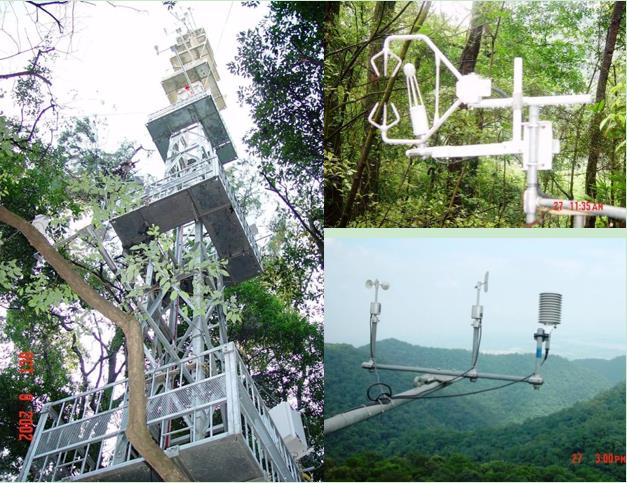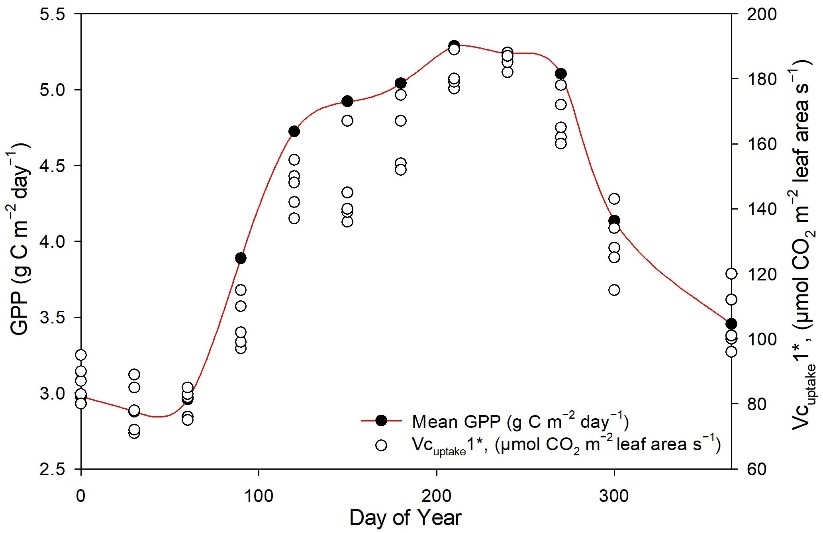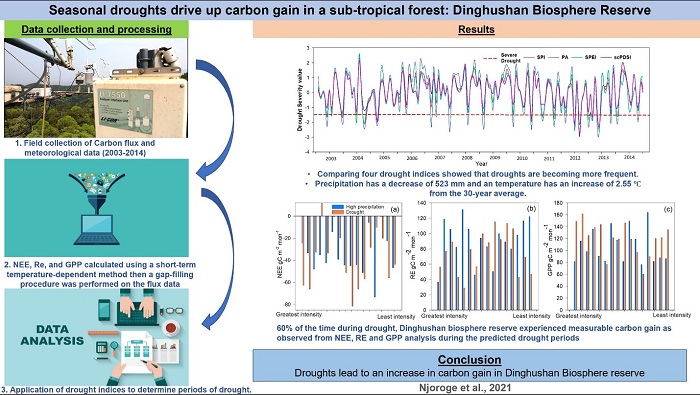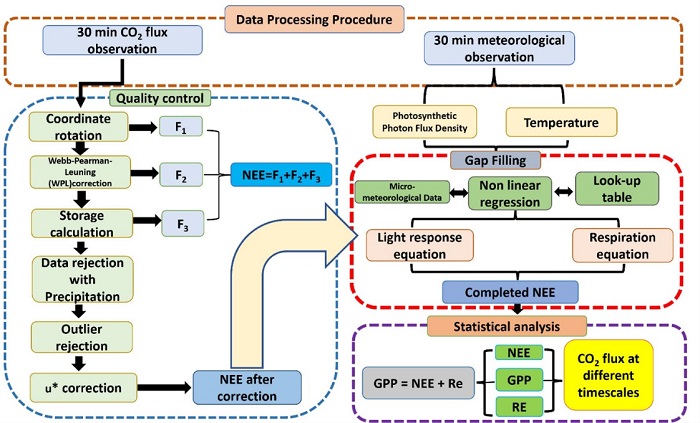

The eddy flux tower at the Dinghushan biosphere reserve has been a very useful tool especially in measuring long-term carbon sequestration and other important meteorological parameters in the forest. The tower was set up in 2002, and it is the first observation station in a lower subtropical forest established by the Chinese Ecological Research Network (CERN). The data acquired thus far has been instrumental in further understanding the carbon sequestration potential of the zonal forest in the first national nature reserve at Dinghushan Mountain in determining ecosystem carbon sink service function, and generally, finding better management and protection methods for regional forests in southern China.
Recently, the researchers at the Dinghushan Forest Ecosystem Research Station, South China Botanical Garden, Chinese Academy of Sciences, Guangzhou, have focused on the key scientific problems to be solved in the "Carbon Peak" and "Carbon Neutrality" (double carbon) plans, enabled by the carbon flux tower, and as a result have published important findings.
“An Interannual Comparative Study on Ecosystem Carbon Exchange Characteristics in the Dinghushan Biosphere Reserve, a Dominant Subtropical Evergreen Forest Ecosystem” was published in October 2021 in Frontiers in Plant Science (IF5-Year=7.255) where the eddy covariance technique was employed to determine accurate forest-atmosphere carbon exchange. We observed seasonal trends in daily ecosystem carbon flux, indicative of sensitivity to climatic factors, such as air temperature, precipitation, and sunlight. Through this study, the Dinghushan biosphere reserve was found to be exemplary and a model forest system useful in exploring CO2 absorption and sequestration from the atmosphere. For further reading, please refer to: https://doi.org/10.3389/fpls.2021.715340
“Seasonal droughts drive up carbon gain in a subtropical forest” was published in September 2022 in the Journal of Plant Ecology (IF5-Year=2.676) and in this we conducted a 12-year study (2003-2014) at the Dinghushan biosphere reserve and established that droughts are increasing in frequency and intensity and that this phenomenon is affecting carbon sequestration in the forest in a unique and counter-intuitive way different from other ecosystems globally namely, the reserve was discovered to sequester more carbon during the drought months as compared to the wet months. For further reading, please refer to: https://doi.org/10.1093/jpe/rtac088
“Carbon flux variation and associated biomass energy storage economic value implications in the Dinghushan Biosphere Reserve” was published in November 2022 in the Journal of Cleaner Production (IF5-Year =11.016) and in this we demonstrated that the eddy covariance technique can be used to measure carbon sequestration and the associated economic value implications. The study showed a measured sequestration average of 5,300 tons of carbon per year equivalent to RMB 3.3 million (USD 530,000) in economic value addition to the region. For further reading, please refer to: https://doi.org/10.1016/j.jclepro.2022.134274
These pieces of published research, show that the eddy flux data is very useful in understanding the physiological and ecological functions of a forest. For the implementation of the "double carbon" plan, the research is timely to help inform policy formulation to further protect and manage the Dinghushan biosphere reserve. Among them, a peer reviewer highly affirmed the assessment of economic value, “the paper is very interesting from both a scientific and an educational point of view”. A Kenyan Ph.D. student Brian Njoroge Mwangi was the first author under the guidance of Prof. Li Yuelin who was the corresponding author alongside other scientists whose contributions helped in the publishing of this important work in various roles. The team is working on future projects that will utilize the eddy flux data to expand the scientific understanding of the Dinghushan biosphere reserve.





